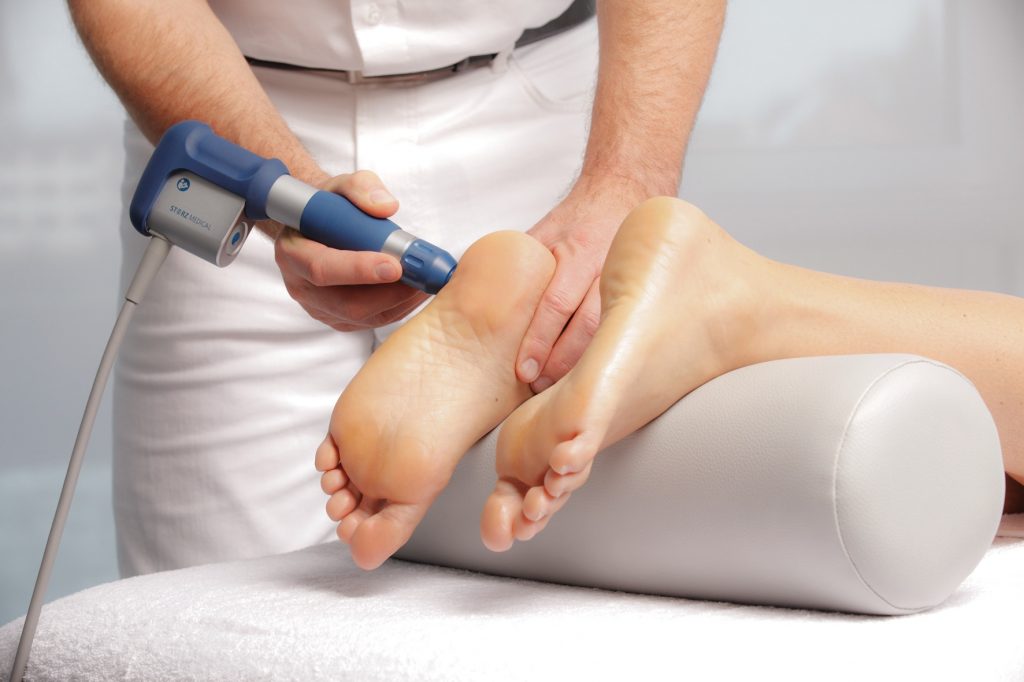When you’ve got foot pain, many people will try anything that promises to get rid…
Which treatment is proven to be the MOST effective for heel pain? The results are in – video included!
Heel pain treatment is one of the most common services for our podiatrists here at Masterton Foot Clinic. Living with heel pain can feel debilitating, commonly causing sharp pain at the bottom of the heel first thing in the morning and on standing after rest. For some people, the pain can last throughout the day.
We get it – and have people see us from all across the Wairarapa daily for a solution to their heel pain. As such, we have always kept our heel pain treatment protocol highly evidence-based, following best-practice principles. We have also paved the way in many areas of podiatry, being the first clinic to offer novel treatments that have shown fantastic results overseas. We recently came across a new and interesting (although not all too surprising!) piece of research, so we thought we’d share it. If you’re living with heel pain and need a solution, this is a must-read.
What Are The Most Effective Heel Pain Treatments?
As plantar heel pain is such a disabling problem, whether it’s plantar fasciitis or something else, heel pain treatments and therapies are regularly studied and reviewed by researchers to help guide all health professionals in getting the best (and evidence-based) results for their patients.
Various heel pain treatments have previously shown good results in managing heel pain symptoms. However, until now, there hasn’t been a standout treatment protocol that notably excelled in its results.
What You Must Know If You Have Heel Pain
Before we tell you which treatment has come out on top in a paper published earlier this month, there are a couple of things you’ve got to understand if you have heel pain.
The first is that your ‘level’ of injury may be very different from the next person we see with heel pain – and this can lead to you both getting different results at different times. Think of it like getting a tear in your shirt. You may have a very small tear at the bottom of your shirt. Someone else may have had a large tear extending from one side of their shirt to the other. Regardless of this (significant) difference, both people are told they have a tear in their shirt.
It’s the same with plantar fasciitis and heel pain. Someone might have a small amount of damage, while someone else may have completely torn their fascia. Either way, they have heel pain from a damaged plantar fascia. Same same, but very different.
What this also means for plantar fasciitis research is that it can be hard to compare results in these studies because not everyone is at the same ‘baseline’.
The Superior Heel Pain Treatment
We won’t leave you in suspense—it’s shockwave treatment. Otherwise known as radial pressure wave treatment, it has been evaluated with robust research designs and has shown significantly better outcomes in treating plantar fasciitis than anything else in the medium and long term.
Shockwave uses acoustic energy to radiate ‘pulses’ from the handpiece into the skin below as it comes in contact with your foot. It works to:
- Reduce pain

- Reduce inflammation
- Facilitate the body’s healing and repair process for new injuries
- Reboot the healing process in longstanding conditions or injuries
- Encourage the formation of new blood vessels
- Stimulate the regeneration of tendons
- Reduce muscle spasticity
- Disintegrate tendon calcifications
If you want to learn more about shockwave and if it can help you, we’ve written all about it here.
Want to read the short version of the paper? There’s a great summary from Bartold Clinic here.
The Best Short-Term Treatment For Heel Pain
While shockwave comes out on top as the best long-term solution for heel pain, if we look at the short term, according to the research, it’s actually specific stretching. Remember, this is only to help reduce immediate symptoms and doesn’t actually ‘fix’ the problem for the long term – not on its own, anyway.
Our Real Results With Shockwave (In-Clinic)
The results from our clinic using shockwave therapy for heel pain have been very encouraging! We treat plantar fasciitis heel pain successfully (which works in 95% of cases and almost all ‘typical’ cases) by using a combination of:
- Shockwave, usually up to four treatments (depending on the severity of your pain) spaced 4-10 days apart
- Footwear recommendations – getting you to wear the shoes that help your recovery instead of working against it!
- Exercises that load the tissues (isometrically) with specific exercises – meaning that we get you to engage the right muscles and tissues in a specific way
- Strapping your foot – to reduce the strain on your plantar fascia, especially in those first painful stages
- Custom foot orthotics – to help support and offload the plantar fascia while you continue to walk throughout the day
- Foot mobilisation therapy – to free up stiff joints and address any limitations that may be interfering with your progress and results
Our experienced podiatrists determine which combination of the above treatments are best for you based on your symptoms and the severity of your injury – there’s no ‘one-size-fits-all’ treatment at Masterton Foot Clinic.
The Verdict On Shockwave For Heel Pain Treatment
This research shows us that – while we’ve known and loved the results we’ve been helping patients get with shockwave – it’s now formally been recognised in studies by researchers and others worldwide. Which is great news! And provides more confidence that if you have heel pain, shockwave is a great place to start. And we’re proud to offer it right here in Masterton, Wairarapa.
Ready to beat your heel pain? Book in with our podiatry team here.
Bartold Clinical has summarised the paper nicely – you can read it here.
